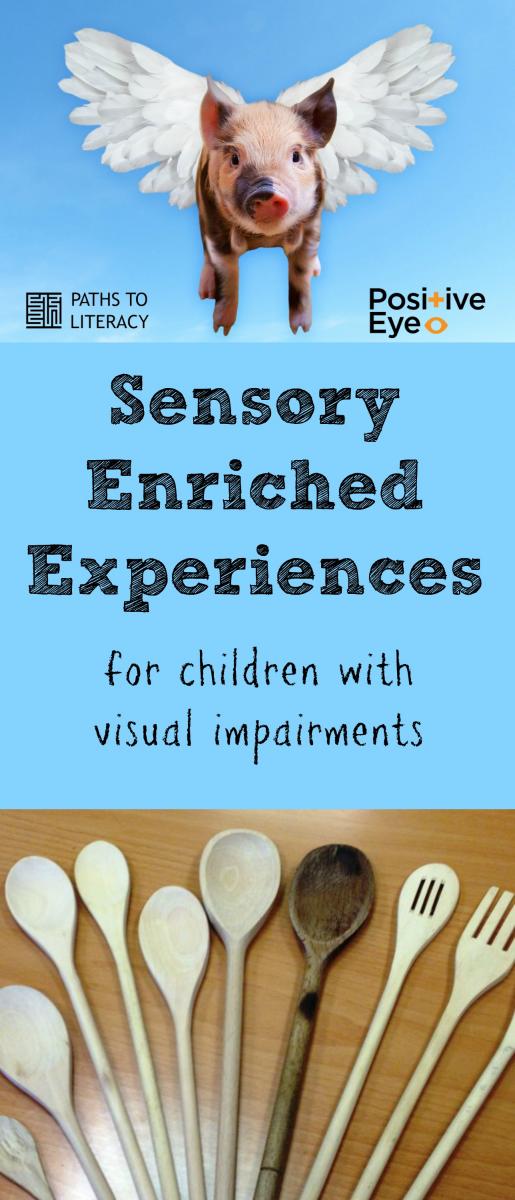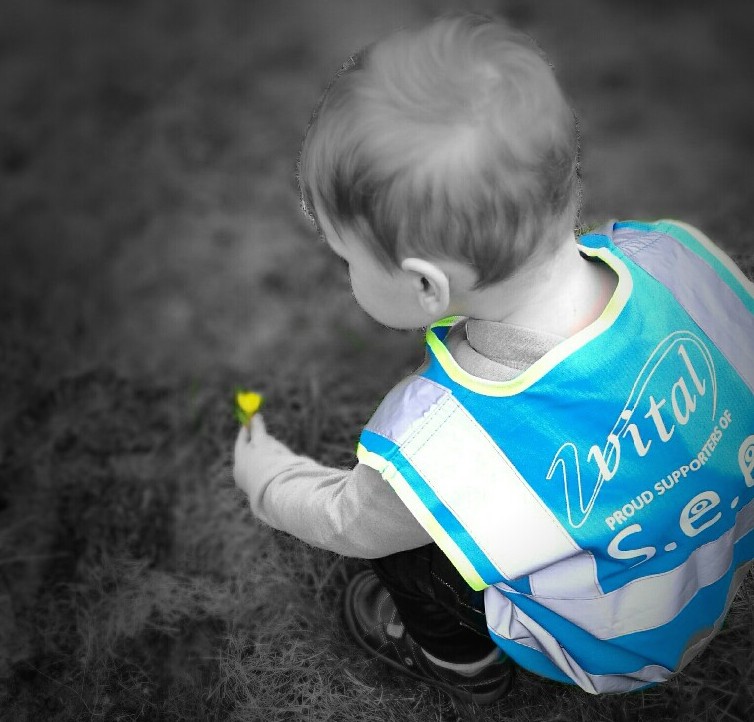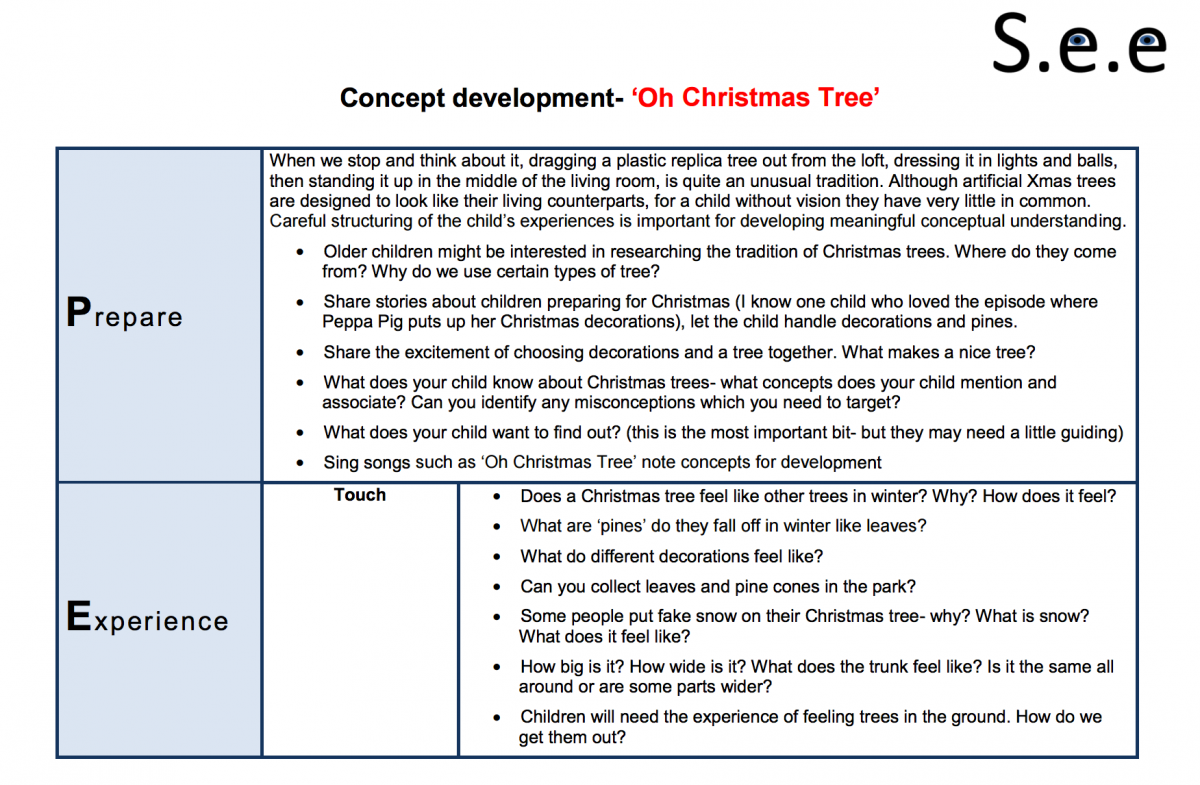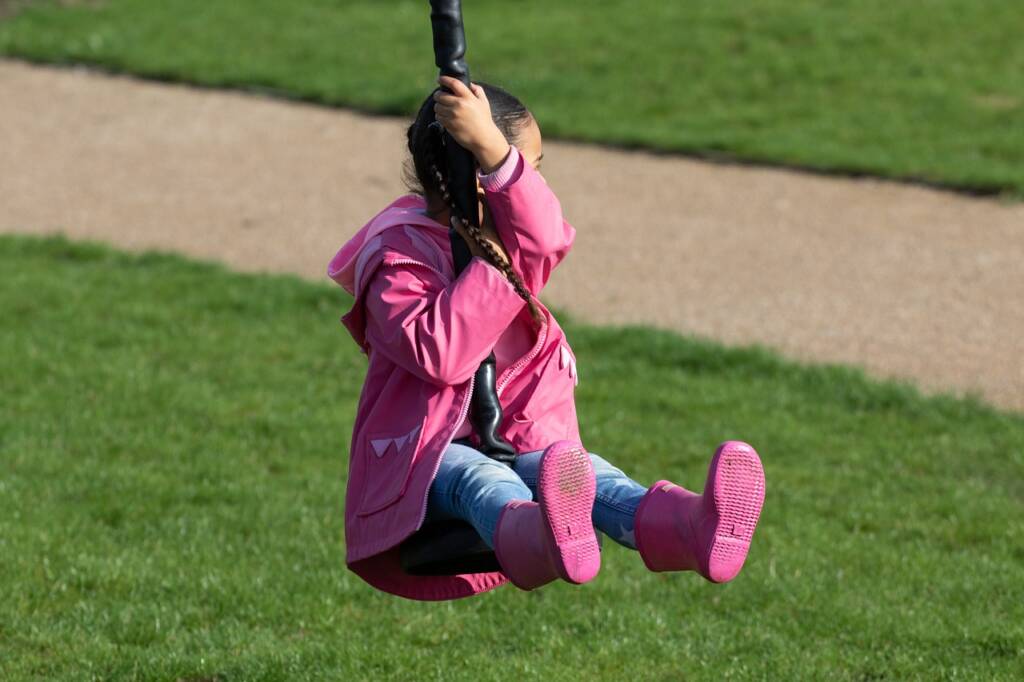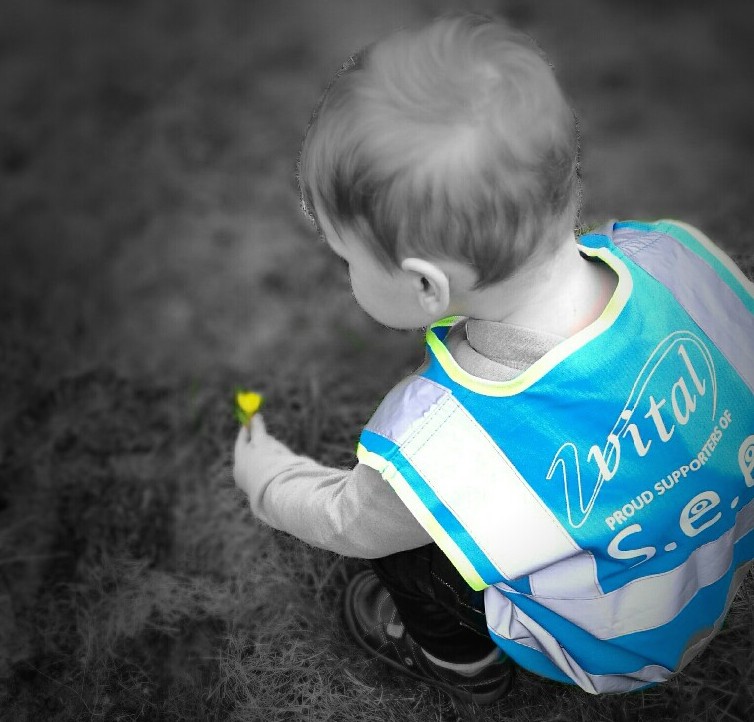 Daniel Downes, Teacher of Vision Impairments, has developed a programme called SEE (Sensory Enriched Experiences) which puts rich literacy experiences at its heart. In the first of a 3-part series, Gwyn McCormack, Director of Positive Eye writes about the importance of concept building and Daniel introduces the programme and explains the theory behind this approach.
Daniel Downes, Teacher of Vision Impairments, has developed a programme called SEE (Sensory Enriched Experiences) which puts rich literacy experiences at its heart. In the first of a 3-part series, Gwyn McCormack, Director of Positive Eye writes about the importance of concept building and Daniel introduces the programme and explains the theory behind this approach.The SEE Approach to Intervention for Children with Visual Impairments
We shall not cease from exploration
And the end of all our exploring
Will be to arrive where we started
And know the place for the first time. — T.S Elliot.
Introduction: Pigs Might Fly
 Several years ago I was supporting a child with a profound vision impairment during a lesson about a farm. As the teacher finished speaking the child leaned over and whispered “Do they have ladders at the farm to feed the pigs?” Slightly confused, I asked him why he felt that ladders would help with feeding the pigs. “Well last week, Miss said that pigs live in the sky” he replied. It turned out that this confusion occurred as a result of a build up of conceptual misunderstandings. He had obviously mistaken the word “sty” for “sky”, but he went on to tell me that he had heard someone else talking about pigs flying. It is understandable how his concept of a pig had been formed and reinforced since he had never seen or touched a real pig. It is likely that every professional working with children with vision impairments is able to match this story with a similar one from personal experience. This article is a description of an approach which places the systematic development of concepts at the heart of intervention.
Several years ago I was supporting a child with a profound vision impairment during a lesson about a farm. As the teacher finished speaking the child leaned over and whispered “Do they have ladders at the farm to feed the pigs?” Slightly confused, I asked him why he felt that ladders would help with feeding the pigs. “Well last week, Miss said that pigs live in the sky” he replied. It turned out that this confusion occurred as a result of a build up of conceptual misunderstandings. He had obviously mistaken the word “sty” for “sky”, but he went on to tell me that he had heard someone else talking about pigs flying. It is understandable how his concept of a pig had been formed and reinforced since he had never seen or touched a real pig. It is likely that every professional working with children with vision impairments is able to match this story with a similar one from personal experience. This article is a description of an approach which places the systematic development of concepts at the heart of intervention.
A recent news article, drawing on data from the report Play in Balance, suggested that three quarters of children aged 6 to 11 spend less time outside than the daily hour recommended for prison inmates (Ward, 2016). While most educators agree that this is detrimental to children’s learning, it is even more so for children with visual impairments. Even though watching TV or playing computer games may not be ideal, sighted children are still able to learn through casual observation – children with visual impairments miss these incidental learning opportunities. According to Kolb (1984, pg. 38) “Learning is the process whereby knowledge is created through the transformation of experience”. If knowledge is directly linked to experience, children with vision impairments are at a distinct educational disadvantage even before they start school. As a result, the most important thing that we can do in order to provide a foundation for learning is to ensure a careful structuring of a child’s experiences.
Although the research on the availability of experiences for children with vision impairments is scarce, the secondary analysis of the Millennium Cohort Survey (Harris et al, 2014) suggests that children with a vision impairment, in many social activities, have similar experiences as their sighted peers. It is likely then that the problem is not with access to experiences, but rather with the accessibility of individual experiences.
What is SEE?
In 1997, Alan Koenig and Carol Farrenkopf (1997) analysed 254 reading scheme stories to identify concepts which a child would need to understand in order to bring meaning to each story. Having identified the main experiences of each story, the researchers then grouped these into 22 categories labelled “global experiences”. Examples of global experiences include making and doing things, working together, going to a farm and using different forms of transportation.
To address the disadvantage faced by children with a visual impairment, we decided to create a programme of Sensory Enrichment Experiences (SEE) aimed at providing a rich base for literacy. The 22 global areas identified by Koenig and Farrenkopf have provided a useful framework for ensuring all children access a broad and equal experience range. Although many sensory services offer educational trips for children with a vision impairment, the unique aspect of the SEE approach is that it is not an add-on; it places experiences at the heart of educational intervention in a structured manner.
The underpinning belief of the SEE approach is that concepts are not fixed, but are formed and reformed through experience (Kolb, pg 11). This assumption is important as it dispels the notion that teaching a topic or facilitating an experience leads to an end point. Therefore in order to keep the learning cycle in motion, the core priority of SEE is to teach children how to learn effectively from experiences. As an illustrative example, let us consider something as simple as a wooden spoon.
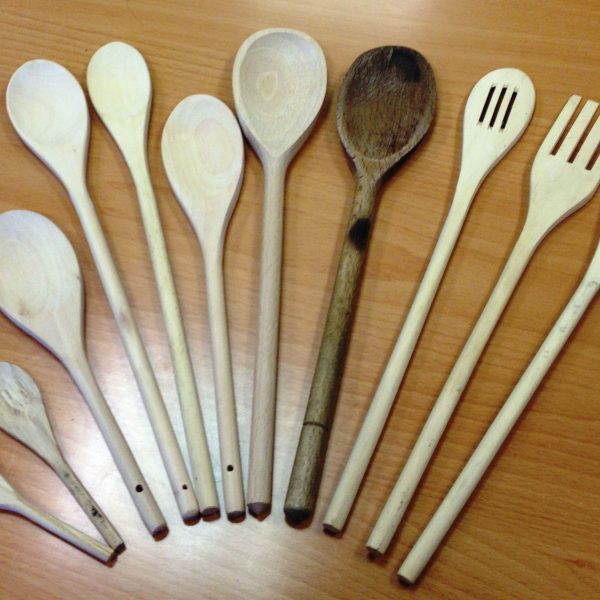
We take the wooden spoon to the child and let them examine it for several minutes and then tick our checklist to confirm this concept is taught. The child has felt the texture of the spoon and knows its size so job done. But where has the spoon gone and where is it kept? Is that the only size of wooden spoon? Are there other types and designs of wooden spoons? Why do we use a wooden spoon? What other wooden cooking implements are available? Have we given the child the in-depth, rich experience of the “woodeness of the wooden spoon” or have we just ticked the checklist to say they have felt a wooden spoon as part of many things on the list of things that require exploration? The quality of the experience is of paramount importance, even with something as simple as a wooden spoon. To the fully sighted child, much of this is achieved in a quick glance or cursory inspection. For the child with a vision impairment, time needs to be taken to fully explore objects and how the objects fit into the whole, or into the wider environment. Without sight very little is obvious.
PEER
The SEE approach is based loosely on Kolb’s model of experiential learning and employs four key stages, which in keeping with the SEE theme, spell PEER: Preparation for learning, Experience, Evaluation, and Reinforcement.
References
Harris, Keil, Lord and Lloyd (2014) Sight impairment at age eleven: Secondary analysis of the Millennium Cohort Survey. RLSB, RNIB and NatCen Social Research
Koenig, A. and Farrenkopf, C. (1997). Essential Experiences to Undergird the Early Development of Literacy. Journal of Visual Impairment and Blindness, 91(1), pp.14-24.
Kolb, D. (1984). Experiential learning. 1st ed. Englewood Cliffs, N.J.: Prentice-Hall.
Ward, H. (2016). Sir Ken Robinson urges schools to help increase outdoor playtime for children. TES. [online] Available at: https://www.tes.com/news/school-news/breaking-news/sir-ken-robinson-urges-schools-help-increase-outdoor-playtime [Accessed 2 Nov. 2016].
For more posts like this, please visit Positive Eye.
